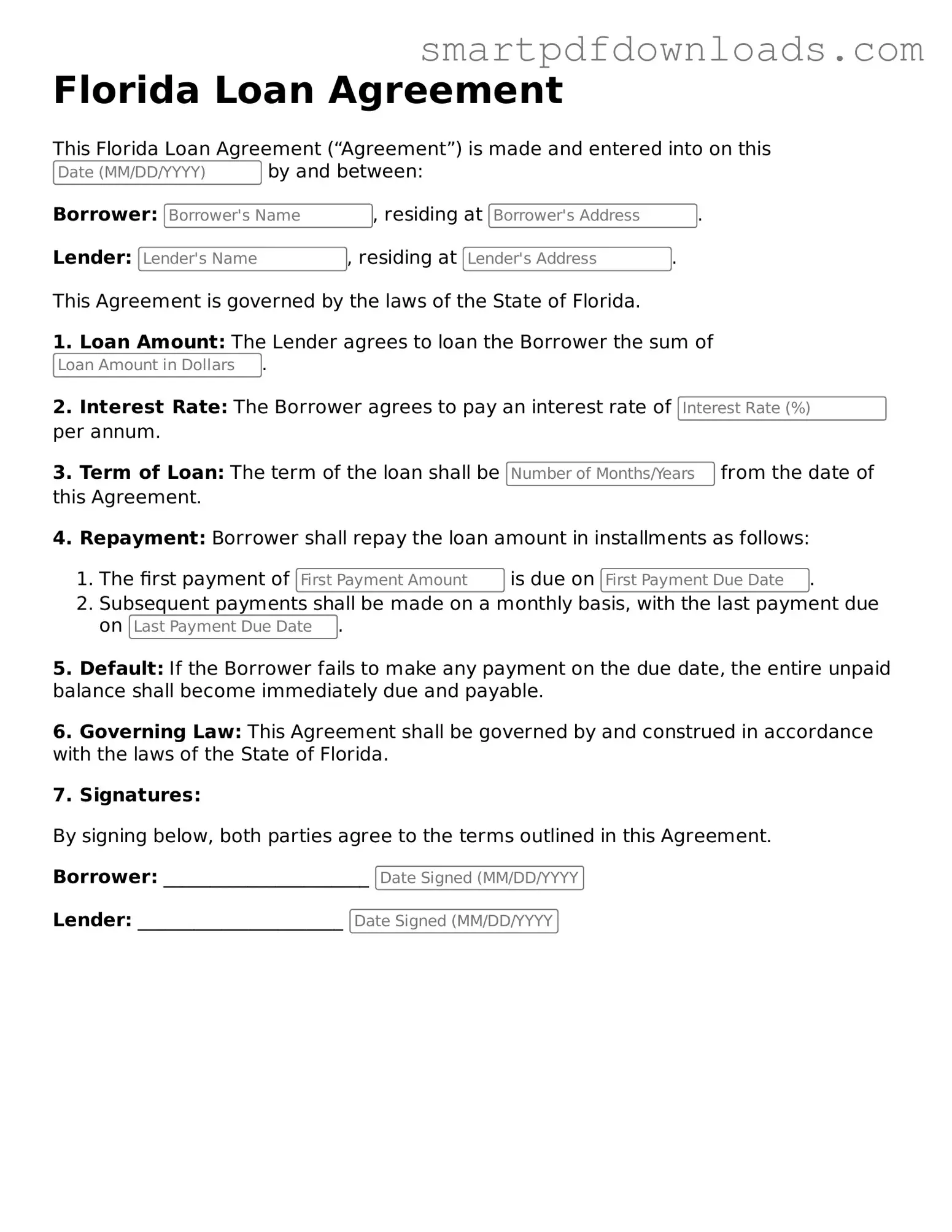Legal Loan Agreement Form for the State of Florida
A Florida Loan Agreement form is a legal document that outlines the terms and conditions under which a lender provides funds to a borrower. This form serves as a crucial tool for both parties, ensuring clarity and protection throughout the borrowing process. By detailing aspects such as repayment schedules, interest rates, and collateral, the agreement fosters a transparent relationship between the lender and borrower.
Edit Loan Agreement Online
